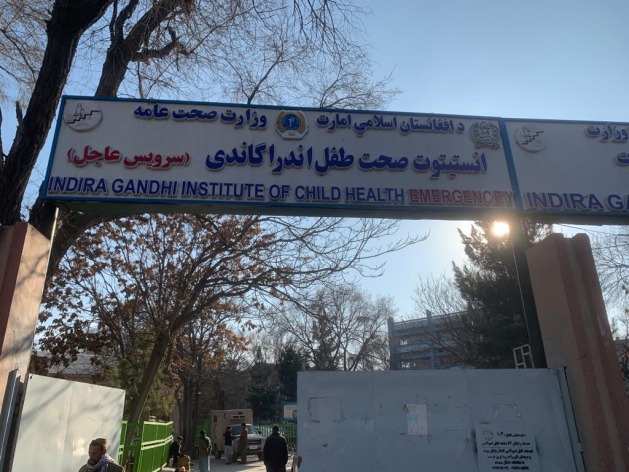ARTICLE AD
 Millions of children are suffering from malnutrition in Afghanistan. Credit: Learning Together kabulFriday, March 22, 2024Inter Press Service
Millions of children are suffering from malnutrition in Afghanistan. Credit: Learning Together kabulFriday, March 22, 2024Inter Press ServiceKABUL, Mar 22 (IPS) - The author is an Afghanistan-based female journalist, trained with Finnish support before the Taliban take-over. Her identity is withheld for security reasonsMalnutrition in Afghanistan has reached an unprecedented level, according to United Nations humanitarian organizations. It is estimated that half of the country's population grapples with severe hunger year-round, placing Afghanistan among the top ten nations globally with the highest rates of maternal and infant mortality due to malnutrition.
The United Nations Children's Fund (UNICEF) is experiencing a budget shortfall, and without additional funding support thousands of Afghan children may die from acute malnutrition, the organization sounded out in a recent tweet.
The World Food Programme (WFP) estimates that between May and October 2023, 15.5 million people faced severe food insecurity, with 2.8 million in emergency situations.
According to WFP, four million people, including 3.2 million children under five years are suffering from acute malnutrition in Afghanistan.
It largely stems from the worsening economic situation that has gripped the war-torn country within the last few years. Pregnant women do not have adequate access to proper nutrition both before and after birth, which cascades down to affect their infants.
The widespread hunger and malnutrition among the most vulnerable population groups in the country is also exacerbated by the rule of Taliban who returned to power in 2021.
The hard-line Islamists have banned women from engaging in salaried employment, which in turn has decreased the level of humanitarian assistance reaching women most in need.
For instance, Soheila, the mother of a malnourished child, gave a moving narrative of how the death of her husband has deepened poverty in the family. She became the sole breadwinner of the family, even though her earnings from working in a hairdressing salon could barely meet their needs, all of which dried up when the Taliban assumed power and she was no longer allowed to work.
Soheila and her two small children no longer have enough food and have resorted to begging in front of bakeries and around neighbours houses just to eat once a day.
Even though the Taliban Ministry of Health does not provide any statistics on the deaths of mothers and children due to malnutrition, international organizations and doctors working in the country provide a grim picture facing women and children in the country.
Last year, the United Nations Population Fund reported that Afghanistan is one of the countries with the highest maternal mortality rate in Asia and the Pacific, with 638 maternal deaths per 100,000 live births.
Jan Egeland, head of the Norwegian Refugee Council, recently raised concerns about the worsening situation of malnutrition in Afghanistan. According to him, a significant number of children and women in 25 of Afghanistan's 36 provinces are suffering from malnutrition.
Dr. Hamidullah Ahmadi, physician at the nutrition department of Kabul Children's Health Hospital, says that the number of malnourished patients has increased compared to previous years due to poverty and the economic crisis.
He added that dozens of malnourished children are registered every day, in serious need of medical attention. Some of them suffer from moderate to acute malnutrition with imminent risk of severe health complications and death.
Dr. Soraya (pseudonym), an official of the nutrition department at the Children's Health Hospital in Kabul, says the number of malnourished patients attending the facility has increased threefold in the last year, far below the medicines and material they receive from international organizations to treat them.
Soraya requests that aid organizations and the World Food Program address the issue of famine and hunger among Afghan children as soon as possible to avoid the occurrence mass starvation of children.
© Inter Press Service (2024) — All Rights ReservedOriginal source: Inter Press Service

 9 months ago
52
9 months ago
52 